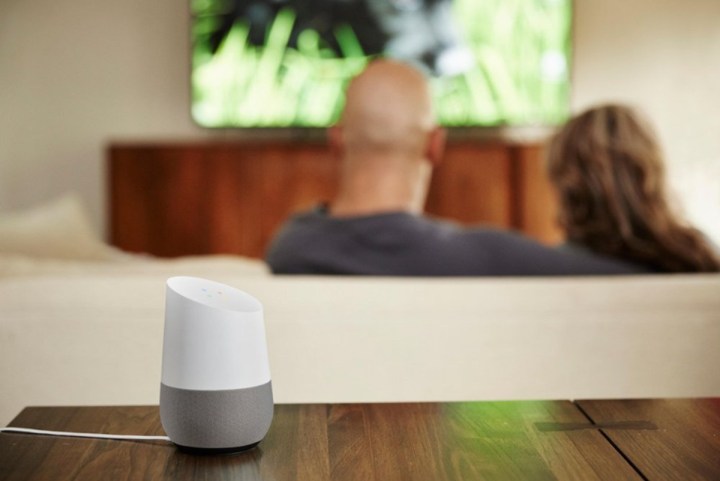Quick, how many devices do you have plugged in around the house right now? If you’re anything like us, there’s bound to be quite a few, like security cameras, smart speakers, LED lights, and smart displays. Now how many of them are drawing power even when they’re not in use?
If you’re able to afford these gadgets, you might not be batting an eyelash at the nominal increase in your electrical bill to keep them humming in a standby state. However, on top of saving a few bucks by limiting idle power usage, increased home electrical efficiency can reduce our dependence on a dirty electrical grid and increase the viability of renewable sources.

A 2015 study of idle power usage in America indicated that the average household was spending $165 per year on powering devices that were “off.” That amounted to about a quarter of a home’s energy usage. Collectively, this drain was staggering.
“All this electricity consumption contributes to the 1,375 billion kilowatt-hours of electricity used in U.S. homes annually and the nearly 1 billion tons of carbon dioxide pollution — 15 percent of all U.S. greenhouse gas emissions — from burning fossil fuels to generate it every year.” – Natural Resources Defense Council, 2015
Breaking it down
On a per device basis, products like set-top boxes, soundbars, and computers can draw upwards of half their total power demands while idle. The specifics of what is drawing the most power in your home will vary by use and manufacturer, but there are ways of getting a clear picture of where the problem areas are.

Outlet attachments that turn appliances off or on through a timer have been available for some time. As a product category, they have evolved to include remote activation, automation, and wattage monitoring. These smart plugs often have smartphone apps so you can get notifications of particularly hungry appliances in your home. Smart plugs can identify which electronics are drawing the most idle power, and by how much. You’ll need to go all-in with a single brand, but that works as a bonus in Amazon’s case, which can factor in other products on the network from their ecosystem.
Other ecosystems, like Power X, can keep tabs on multiple utilities. Being able to monitor water, water heating, and electrical all from within the same app is a convenience that can’t be understated.
For a wider view of your overall energy usage, you can dig into smart meters and home monitoring systems. These can be an even more appealing option to cast a wide net and monitor a high number of devices each suckling just a little bit of power all day. The downside is that full home energy monitoring solutions can be more expensive and require more setup than smart plugs. Smart meter availability is largely contingent on your electrical provider, too.
The low tech option
Getting products to monitor your other products might be an additional hassle that’s just not worth the extra mental overhead. Even if it is, these solutions have their own power draws that will take a small bite out of your potential energy savings.
It’s possible to achieve similar efficiencies by simply getting in the habit of unplugging your electronics (or, more conveniently, turning off their power bar) when not in use. That’s a bit more movement physically, but if you’re able to apply this blanket sensibility with all of your home electronics, it shouldn’t take up any extra real estate in your head.
Energy vampires are sneaky

It’s easy to point to smart devices that need to be ready at a moment’s notice as the greatest culprits of phantom power draw, but that’s not always the case. In fact, smart speakers, despite being in an always-on state listening for that magic word, are actually quite energy efficient. More innocuous sources could be the bigger problem. For example, it turns out that linking your TV to voice activation can increase the TV’s idle power draw from 0.5W to 20W.
The good news
The upside of this challenge is that energy efficiency is top of mind for the world’s leading electronics manufacturers. Even though the number of plugged-in devices has been increasing steadily, consumer electronics energy usage has been dropping since 2006. Many of the components in smartphones are necessarily power-conscious and they’re trickling into smart home technology.
Supplemental certifications like Energy Star can help ensure products are staying modest about their power draw even at their quietest moments. High-use home appliances in heating and cooling are enjoying drastic reductions in active power use thanks to smart thermostats running perpetually in the background. As smart home product categories mature, so do their efficiencies.
Small compromises go a long way
Improving the power efficiency of your home may ultimately come at the cost of fewer conveniences. We’re getting more and more accustomed to always-on products, but it’s entirely possible to survive with fewer of them. On top of that, it takes work to dig into the energy data of your home, but at the other end of all that effort, you can make an appreciable difference in your electrical usage, and take one more step towards a greener future.



